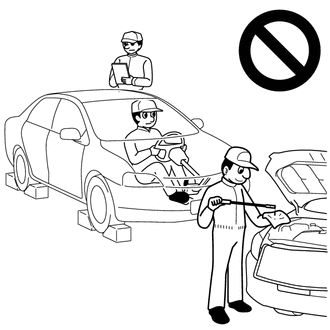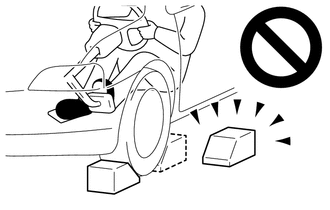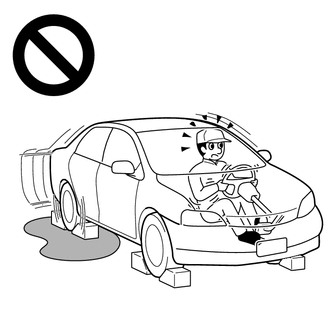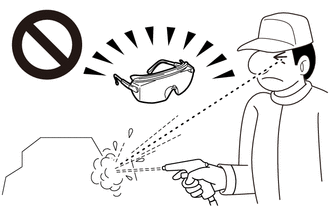| Last Modified: 05-13-2024 | 6.11:8.1.0 | Doc ID: RM1000000028DVO |
| Model Year Start: 2023 | Model: Corolla Hatchback | Prod Date Range: [11/2022 - ] |
| Title: K120 / K121 (CVT): K120 CONTINUOUSLY VARIABLE TRANSAXLE SYSTEM: PRECAUTION; 2023 - 2025 MY Corolla Corolla Hatchback [11/2022 - ] | ||
PRECAUTION
PRECAUTIONS FOR DISCONNECTING AND RECONNECTING CABLE TO NEGATIVE (-) BATTERY TERMINAL
NOTICE:
After the engine switch is turned off, there may be a waiting time before disconnecting the negative (-) battery terminal.
HINT:
When disconnecting and reconnecting the battery, there is an automatic learning function that completes learning when the respective system is used.
IGNITION SWITCH EXPRESSION
HINT:
The type of ignition switch used on this model differs depending on the specifications of the vehicle. The expressions listed in the table below are used in this section.
|
Expression |
Ignition Switch (Position) |
Engine Switch (Condition) |
|---|---|---|
|
Ignition Switch off |
Off |
Off (Lock) |
|
Ignition Switch ON |
ON |
On (IG) |
|
Ignition Switch ACC |
ACC |
On (ACC) |
|
Engine Start |
START |
On (Start) |
PRECAUTION
NOTICE:
-
If Continuously Variable Transaxle (CVT) parts are replaced, perform the following as necessary:
Parts Replacement Compensation Table
*1: When replacing with a new TCM *2: When replacing with a TCM which was installed to another vehicle
Replaced Part
Transaxle Compensation Code
Reset Memory (Learned Values)
CVT Oil Pressure Calibration
Road Test
Continuously variable transaxle assembly
Input
Reset
Initialize
Necessary
Transmission valve body assembly
Initialize
Reset
Initialize
Necessary
Oil pressure sensor
-
Reset
Initialize
Necessary
TCM
(If possible, read the transaxle compensation code from the previous TCM)
Possible to read transaxle compensation code
Input (Into new TCM)
-*1
Reset*2
Initialize
Necessary
Impossible to read transaxle compensation code
Initialize
-*1
Reset*2
Initialize
Necessary
ECM
-
Reset
Initialize
Necessary
-
If either of the following conditions is met, perform ATF Thermal Degradation Estimate Reset:
-
The CVT fluid has been replaced.
HINT:
If 50000 or more is displayed for the Data List item "ATF Thermal Degradation Estimate", thermal degradation of the CVT fluid is suspected. Perform ATF Thermal Degradation Estimate Reset after replacing the CVT fluid.
- Approximately 50% or more of the CVT fluid has been replaced during a repair of the transaxle or a similar operation.
-
The CVT fluid has been replaced.
- When the TCM is replaced, update the ECU security key
HANDLING PRECAUTIONS
CAUTION:
-
Do not perform a stall test if there are any people or objects near the vehicle.

- The vehicle could begin moving suddenly, resulting in a serious accident.
-
Do not perform a stall test if any wheel chock is out of position.

- The vehicle could begin moving suddenly, resulting in a serious accident.
-
Do not perform the stall test on a slippery or low-friction surface that could allow the tires to spin.

- The vehicle could begin moving suddenly, resulting in a serious accident.
-
Do not use compressed air when not wearing safety glasses.

- CVT fluid could enter your eyes, possibly resulting in blindness.
NOTICE:
- Before removing components from the transaxle, clean off any sand, dirt or other foreign matter. Make sure that foreign matter does not enter the transaxle when parts are removed or installed.
- When disassembling alloy parts, such as the transaxle case, do not pry on them with a screwdriver or similar tool. Instead, tap the parts with a plastic hammer to separate them.
- Do not wear cloth gloves or use a cloth to handle parts during removal, disassembly, or installation of the transaxle. Instead, wear synthetic gloves to prevent cloth fibers from entering the transaxle.
- Use of Toyota Genuine CVT Fluid FE is recommended.
- Do not subject parts such as sensors to any impact. Replace parts with new ones if they are dropped or subjected to a severe impact.
- The continuously variable transaxle assembly is composed of precision-made parts. Careful inspection before reassembly is necessary because even a small nick could cause fluid leakage or affect performance.
- The procedures are organized so that you work on only one component group at a time. This will help avoid confusion with similar-looking parts of different sub-assemblies being on your workbench at the same time.
- The component groups are inspected and repaired from the torque converter housing side.
- Whenever possible, complete inspection, repair and reassembly before proceeding to the next component group. If a defect is found in a certain component group during reassembly, inspect and repair this group immediately. If a component group cannot be assembled because parts are being ordered, be sure to keep all parts of the group in a separate container while proceeding with disassembly, inspection, repair and reassembly of other component groups.
- All disassembled parts should be cleaned, and compressed air should be blown through any fluid passages and holes.
- Dry all parts with compressed air. Never use a piece of cloth.
- The recommended CVT fluid should be used for cleaning.
- After cleaning, the parts should be arranged in the order they were removed for efficient inspection, repair and reassembly.
- New brake discs and clutch discs must be soaked in CVT fluid for at least 15 minutes before reassembly.
- All oil seal rings, clutch discs, clutch plates, rotating parts, and sliding surfaces should be coated with CVT fluid prior to reassembly.
- All old gaskets and rubber O-rings must be replaced.
- Do not apply adhesive cement to gaskets or similar parts.
- Check the thrust bearings and races for wear or damage. Replace them if necessary.
-
When working with seal packing (FIPG), observe the following:
- Using a razor blade and a gasket scraper, remove all of the old seal packing (FIPG) from the gasket surface.
- Thoroughly clean all components to remove any seal packing (FIPG).
- Clean both sealing surfaces with a non-residue solvent.
- Parts must be reassembled within 10 minutes of application. Otherwise, the seal packing (FIPG) must be removed and reapplied.
|
|
|
![2023 - 2025 MY Corolla Corolla Hatchback Corolla HV GR Corolla [09/2022 - ]; SETUP: WHEN DISCONNECTING OR RECONNECTING BATTERY TERMINAL: BEFORE DISCONNECTING BATTERY](/t3Portal/stylegraphics/info.gif)